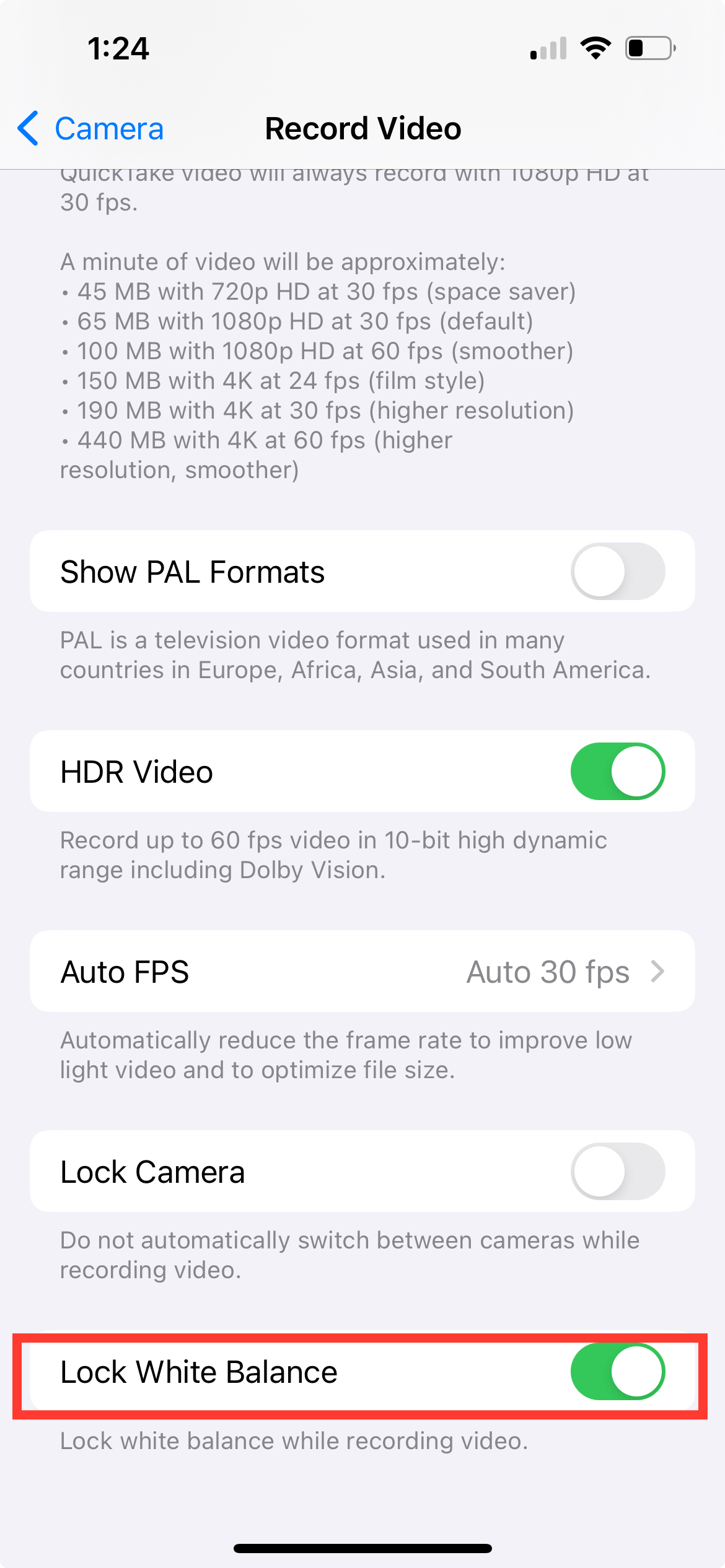It's worth updating your iPhone to iOS 17 for this feature
In the new iOS 17, a feature I personally had been eagerly anticipating has been introduced. It's called "Lock White Balance" — a function that allows you to fix the white balance during video recording. This feature is available for all iPhones that can be updated to iOS 17.
"But what if I have an Android phone?" you might ask. In that case, this function is likely available in the PRO camera settings of your phone, noted as "WB."
"But what if I have an Android phone?" you might ask. In that case, this function is likely available in the PRO camera settings of your phone, noted as "WB."
White Balance is a setting in the configurations of both photo and video cameras, including smartphone cameras, that adjusts the color temperature of the image. Color temperature defines the character of the light displayed in the picture and is measured in Kelvins (K). White balance allows the camera to adapt automatically or manually to various lighting sources such as daylight, incandescent lamps, fluorescent lamps, and others.
The process of white balance correction is necessary because different light sources emit light of different color temperatures. For instance, daylight can be cooler and more blue, while incandescent lamps produce a warmer, yellowish light. Without white balance correction, the image may acquire undesirable tones.
Adjusting the white balance allows achieving accurate color reproduction and maintaining consistency in the visual perception of colors under different shooting conditions. The correctness of the white balance directly influences how realistic and natural the colors will appear in photographs or video recordings.
The process of white balance correction is necessary because different light sources emit light of different color temperatures. For instance, daylight can be cooler and more blue, while incandescent lamps produce a warmer, yellowish light. Without white balance correction, the image may acquire undesirable tones.
Adjusting the white balance allows achieving accurate color reproduction and maintaining consistency in the visual perception of colors under different shooting conditions. The correctness of the white balance directly influences how realistic and natural the colors will appear in photographs or video recordings.
How to enable the new feature and how to ensure that the white balance doesn't change during video recording:



How does "Lock White Balance" work during video recording?
Locking the White Balance is especially crucial when shooting Reels videos or TikTok with seamless transitions. The phone automatically adjusts to the scene, but with the new iPhone feature, the issue is resolved, even if you or another object exit the frame.
Your task is to carefully observe the videos on the right and left. Pay attention to the white sheet I used for illustration. On which video does it appear to become more red or more blue during the video recording process?
Your task is to carefully observe the videos on the right and left. Pay attention to the white sheet I used for illustration. On which video does it appear to become more red or more blue during the video recording process?
The video on the left was shot using this feature. During recording, the white sheet doesn't change its color and remains uniform. However, it's not just the white sheet; these settings affect the entire picture. So, the color of the tube, which might not be very noticeable to our eyes, also stays consistent. But if this feature is not enabled, both the tube and the skin change their shades during video recording. Fixing this within a single frame is not feasible in post-processing. Due to such nuances, the video as a whole can become "unclean."
Below, I've provided a scale of light temperatures in Kelvins, along with examples of the corresponding natural or artificial light for specific temperature values

If you're into mobile video production, you can GET A FREE LESSON ON PHONE EDITING by subscribing to my informative newsletters. Just leave your email. My newsletter on tips for promoting through short videos for YouTube, REELS, TikTok comes 2-3 times a month and won't bother you.
By clicking the button, you consent to the processing of your personal data and agree to the privacy policy
If you enjoyed the article, subscribe to my social media using the buttons below.
Author - Entrepreneur , Blogger
@safronova_video